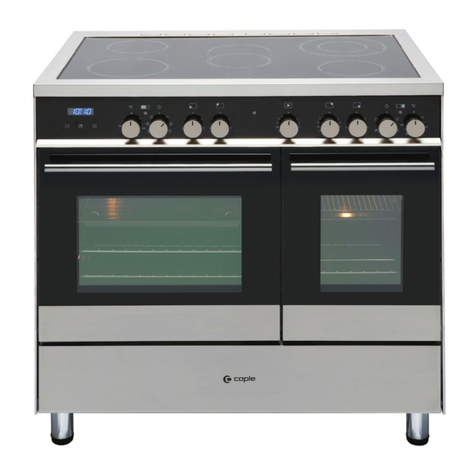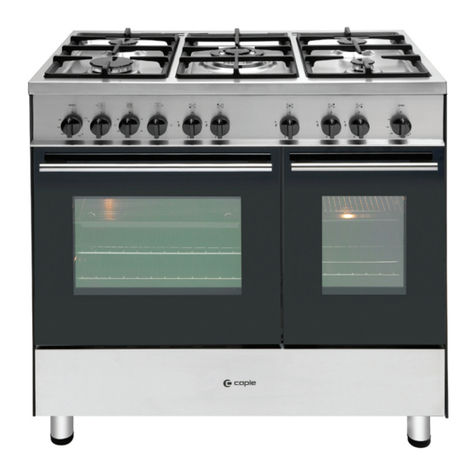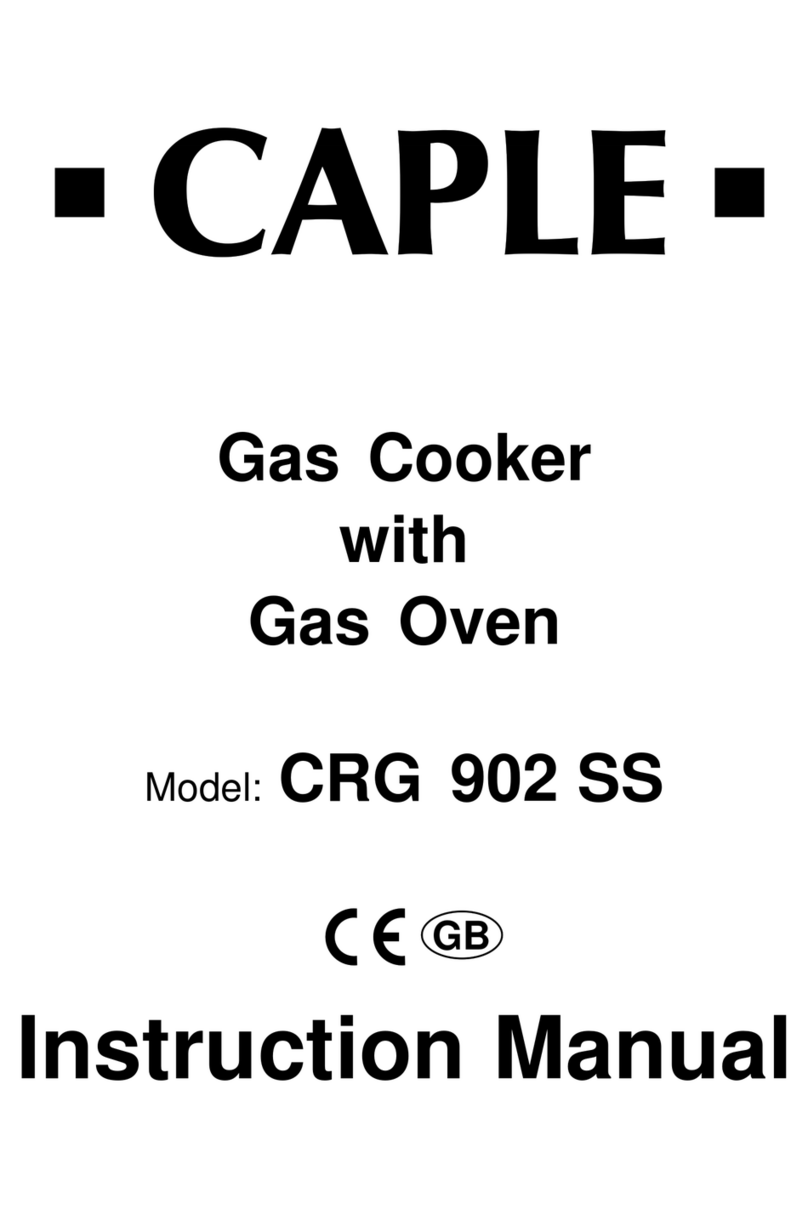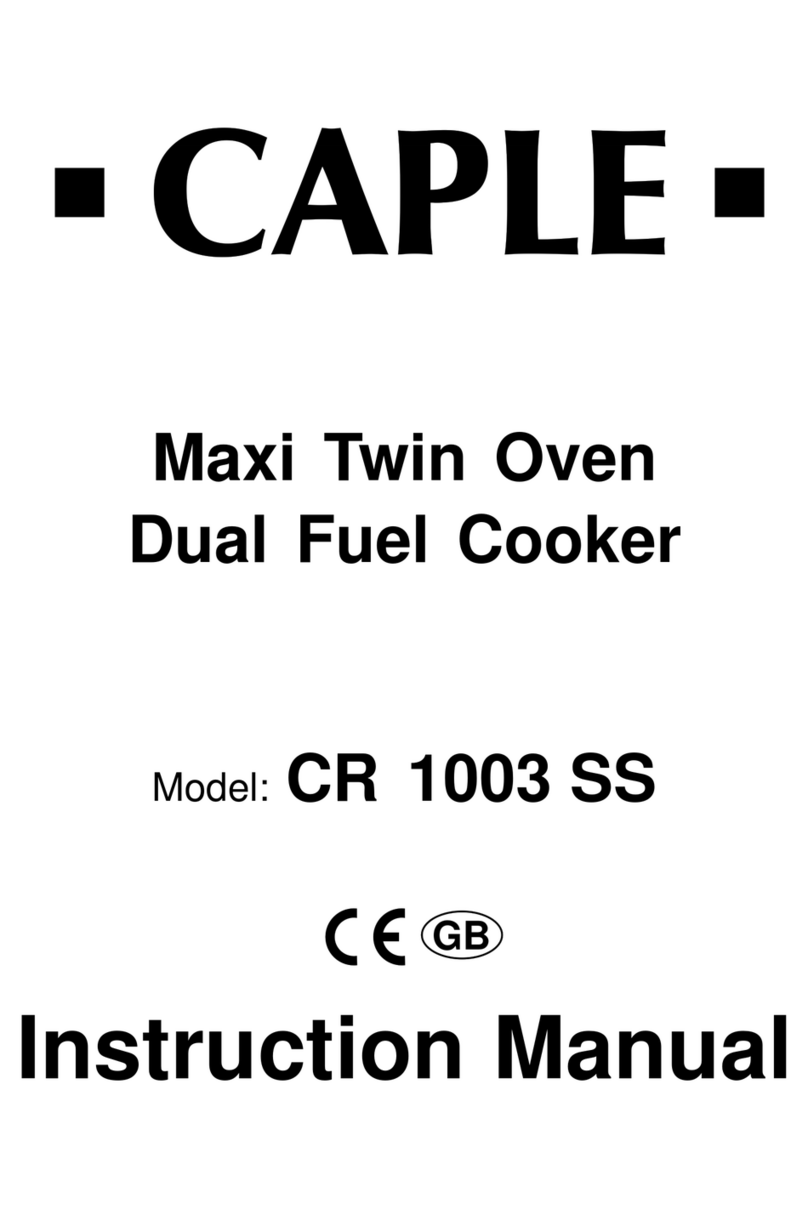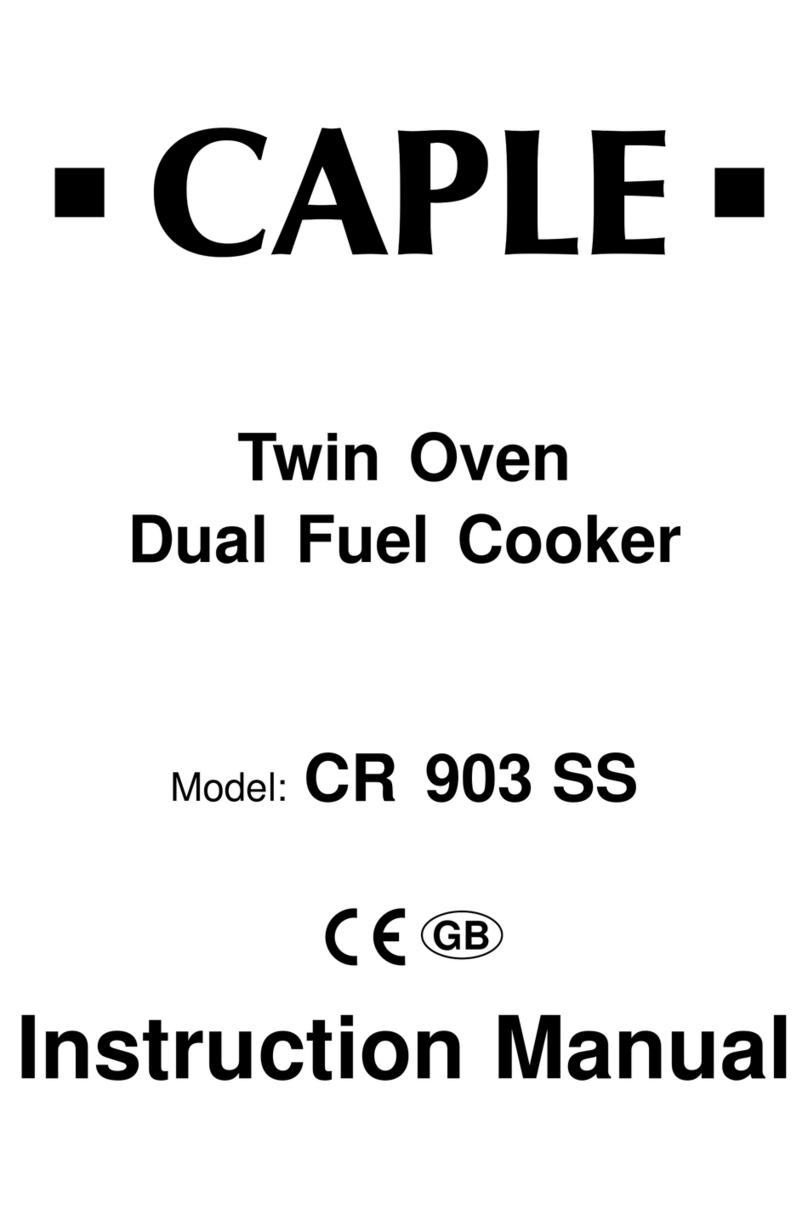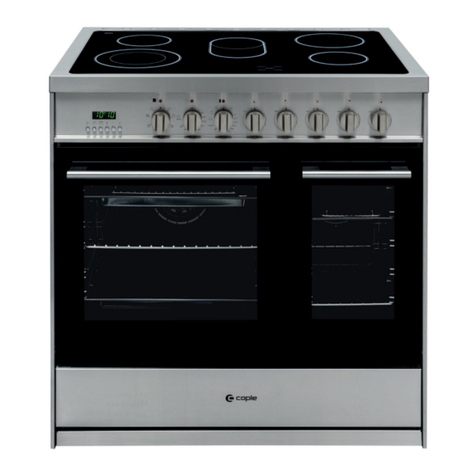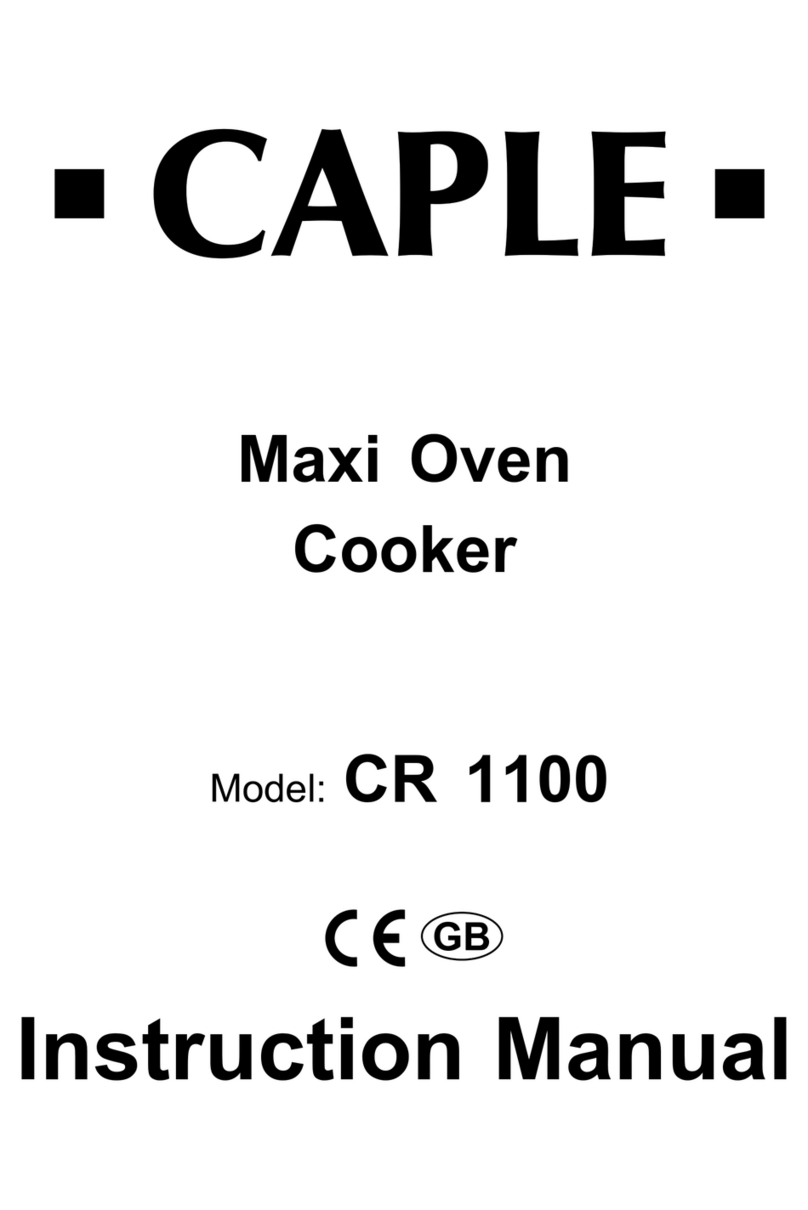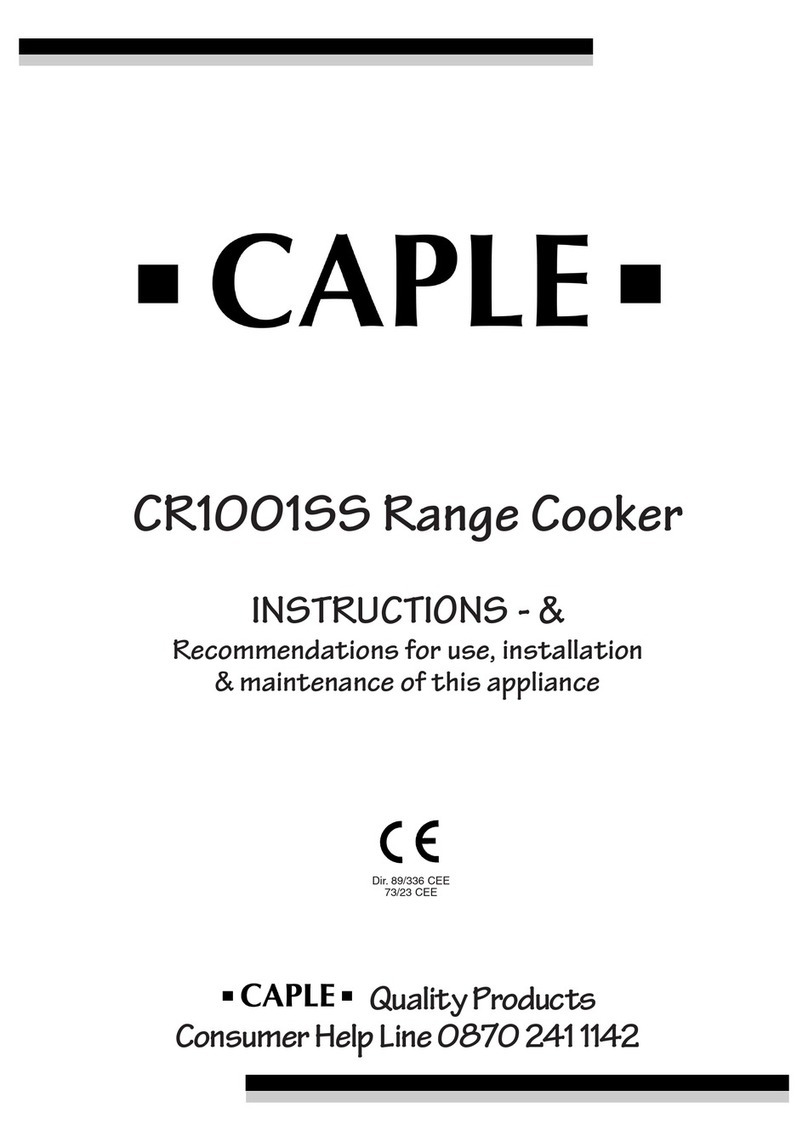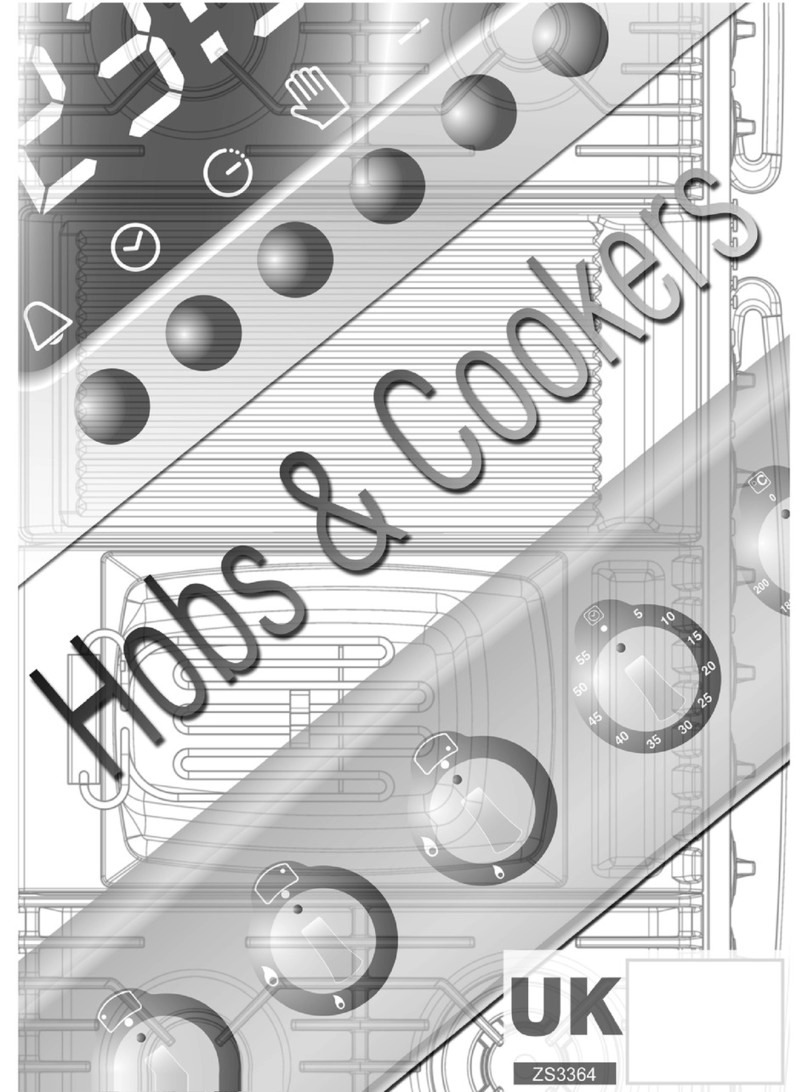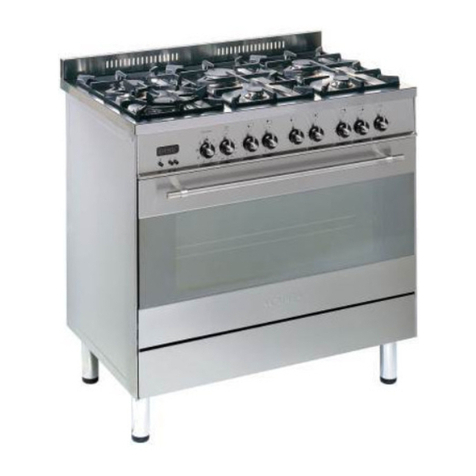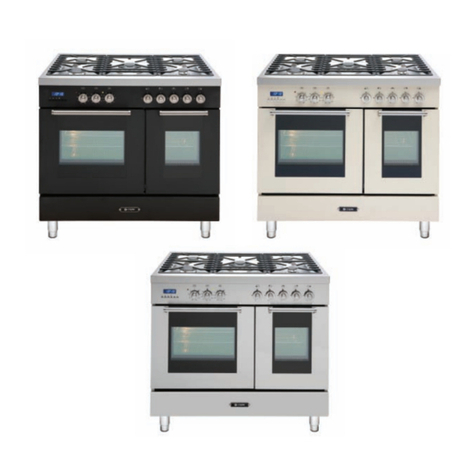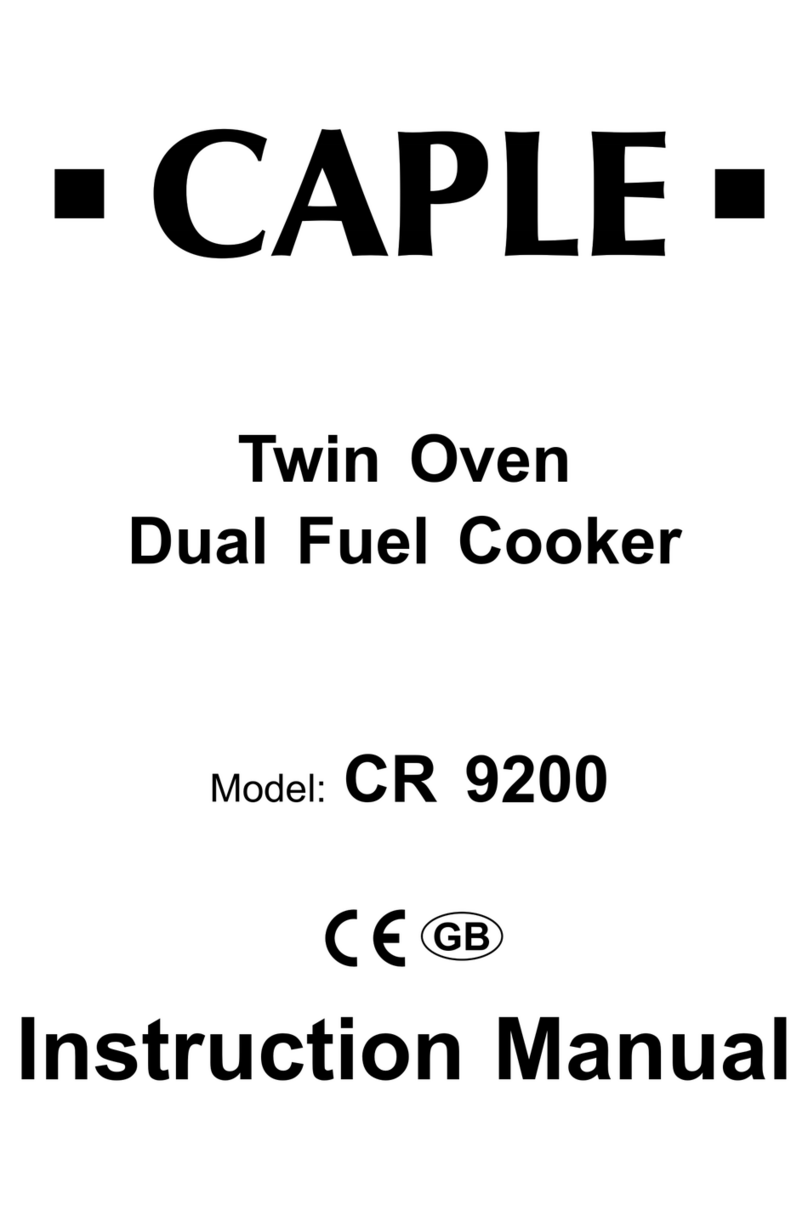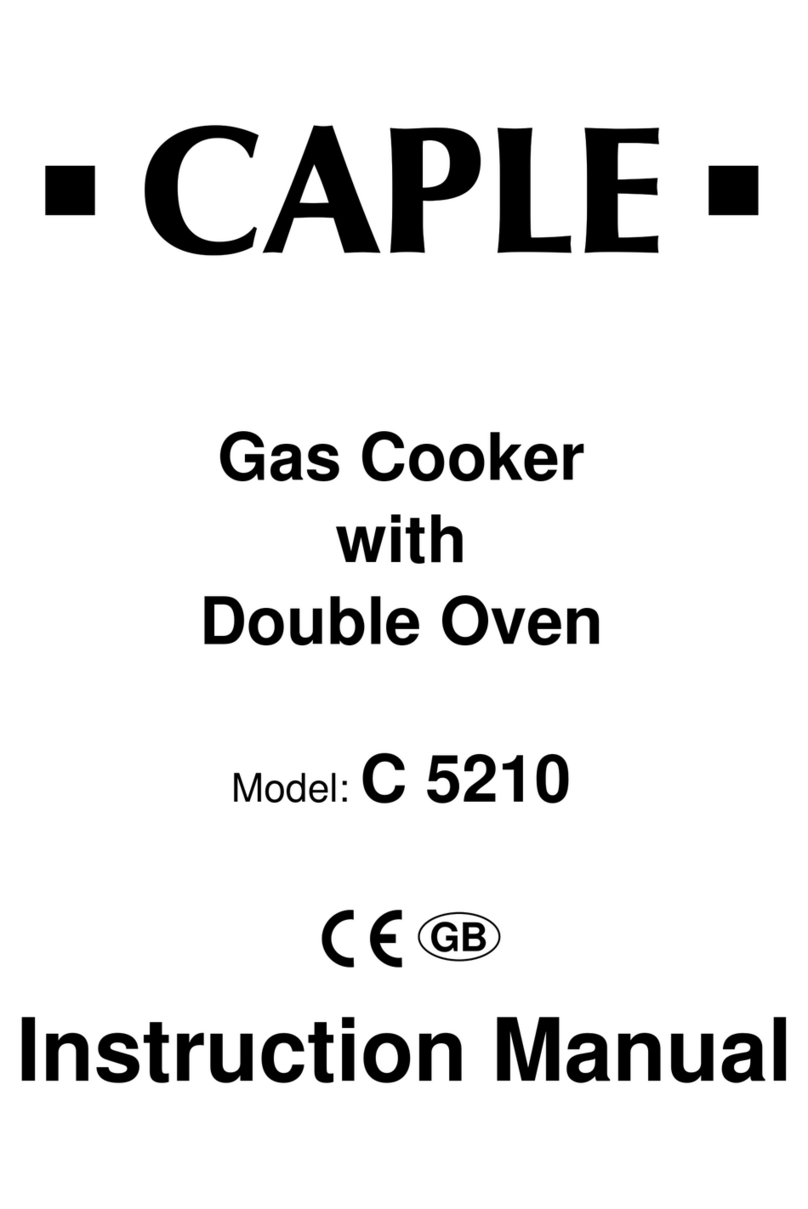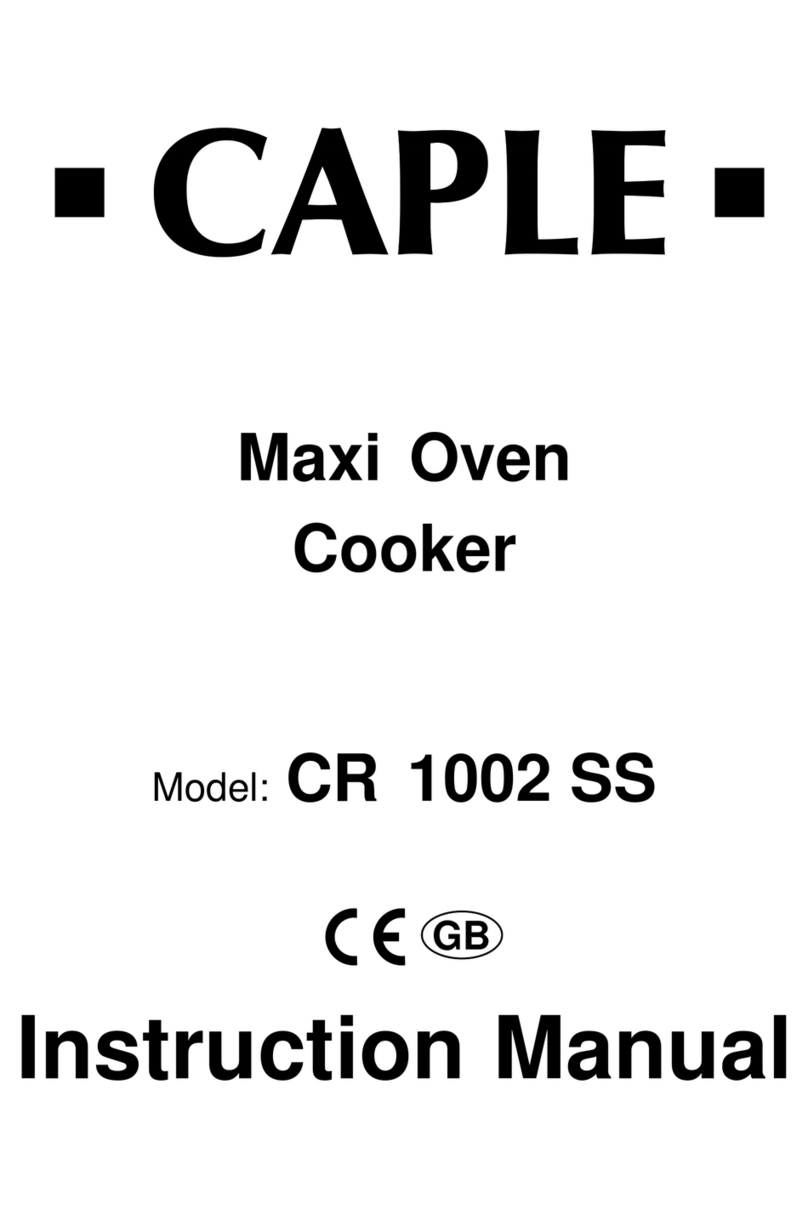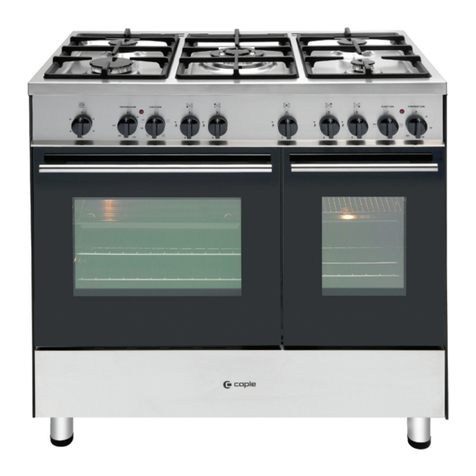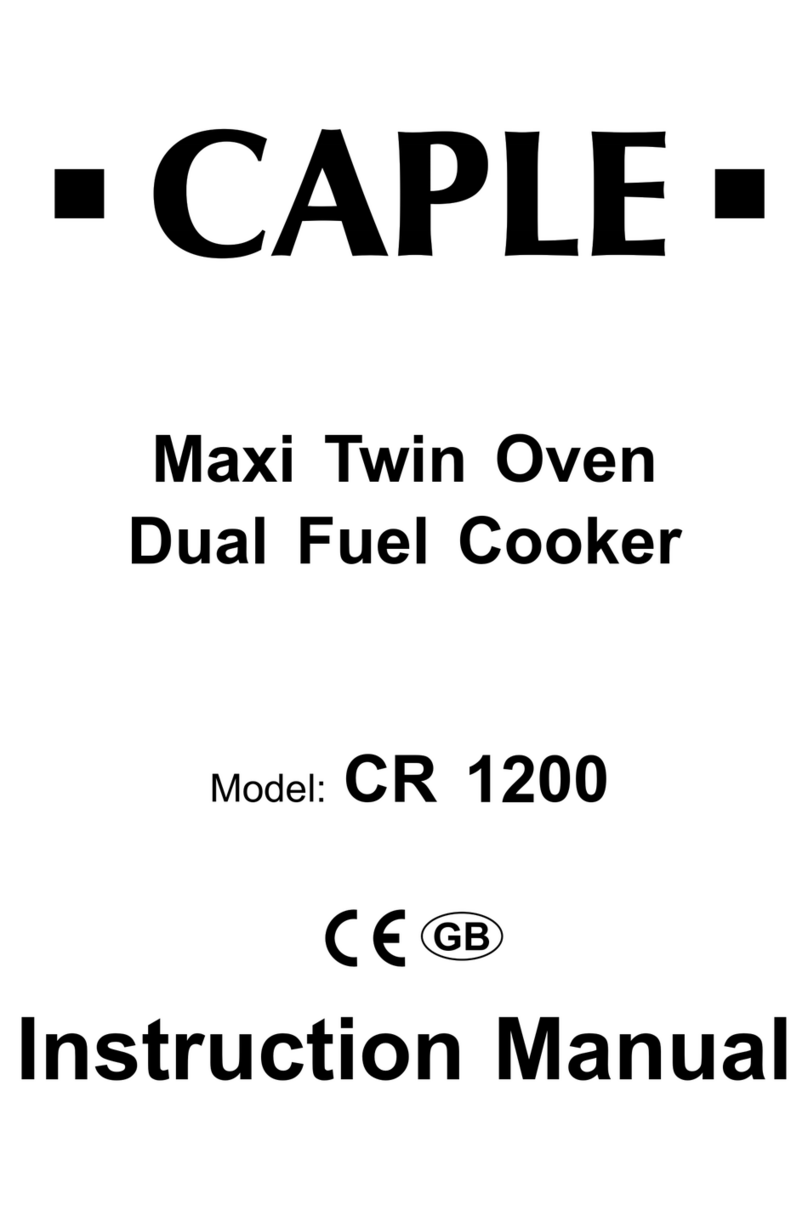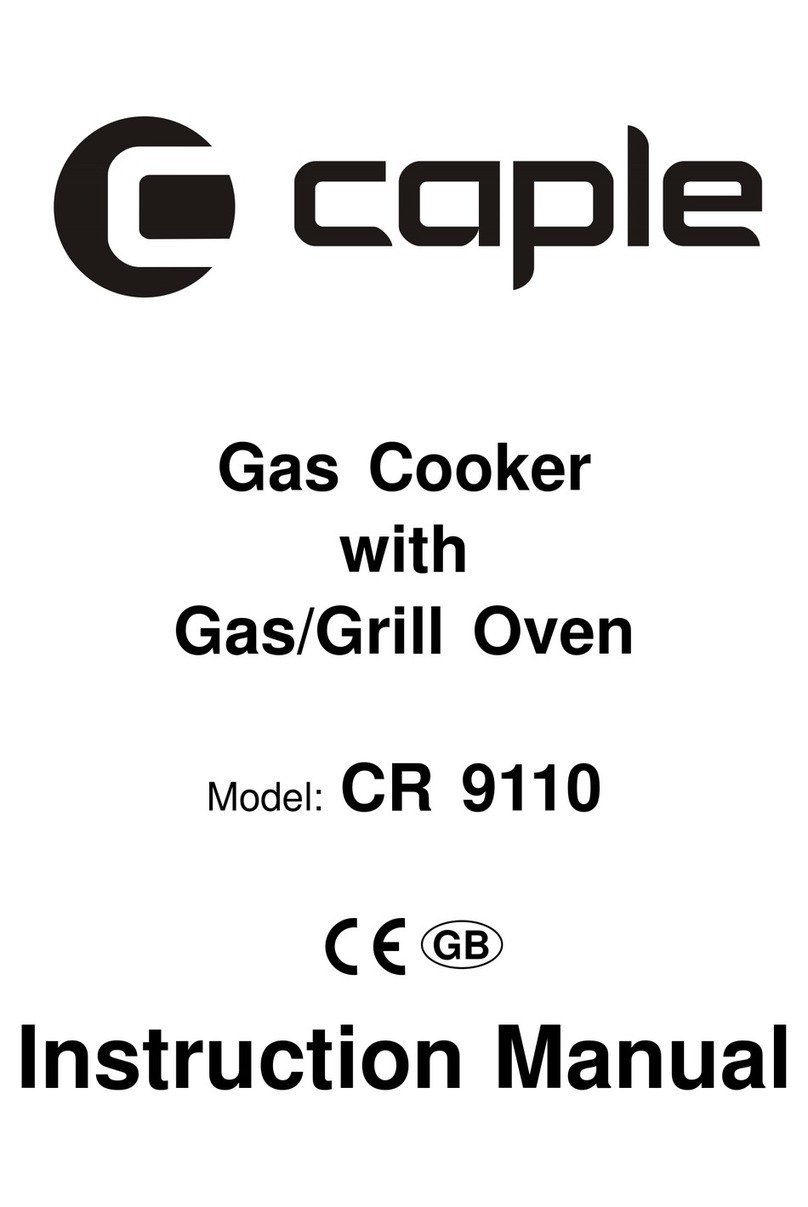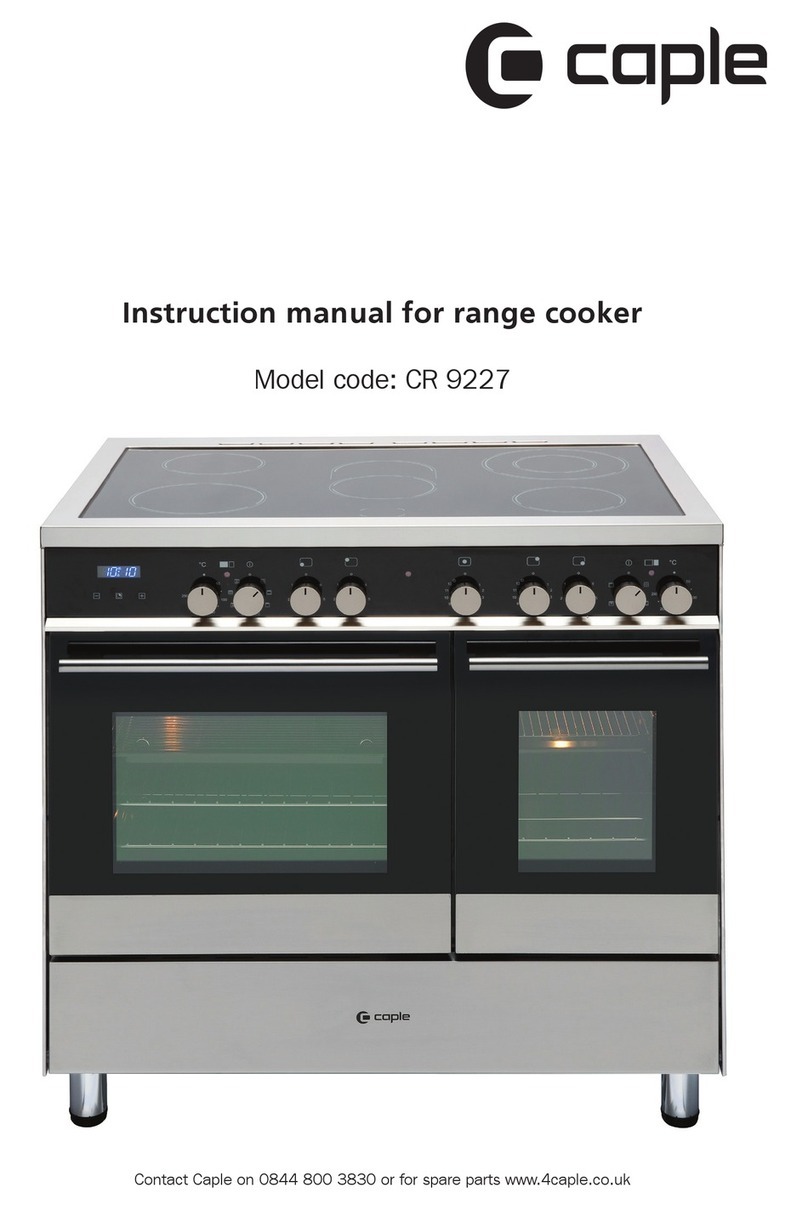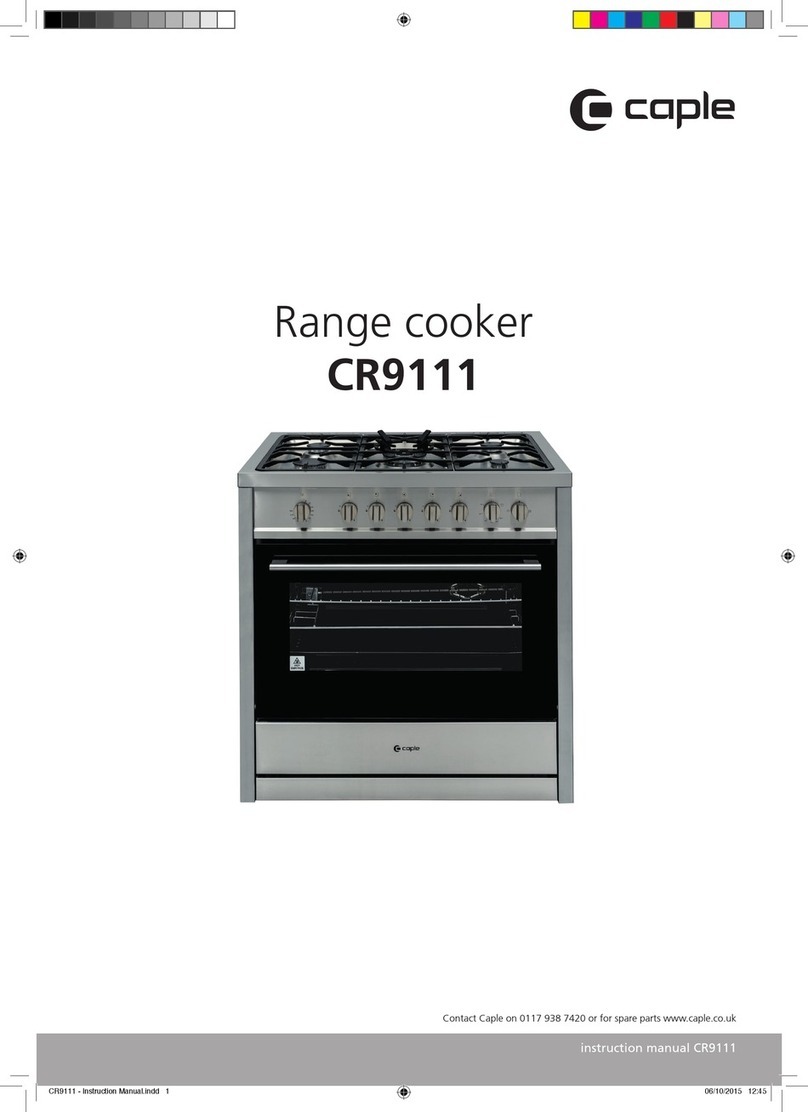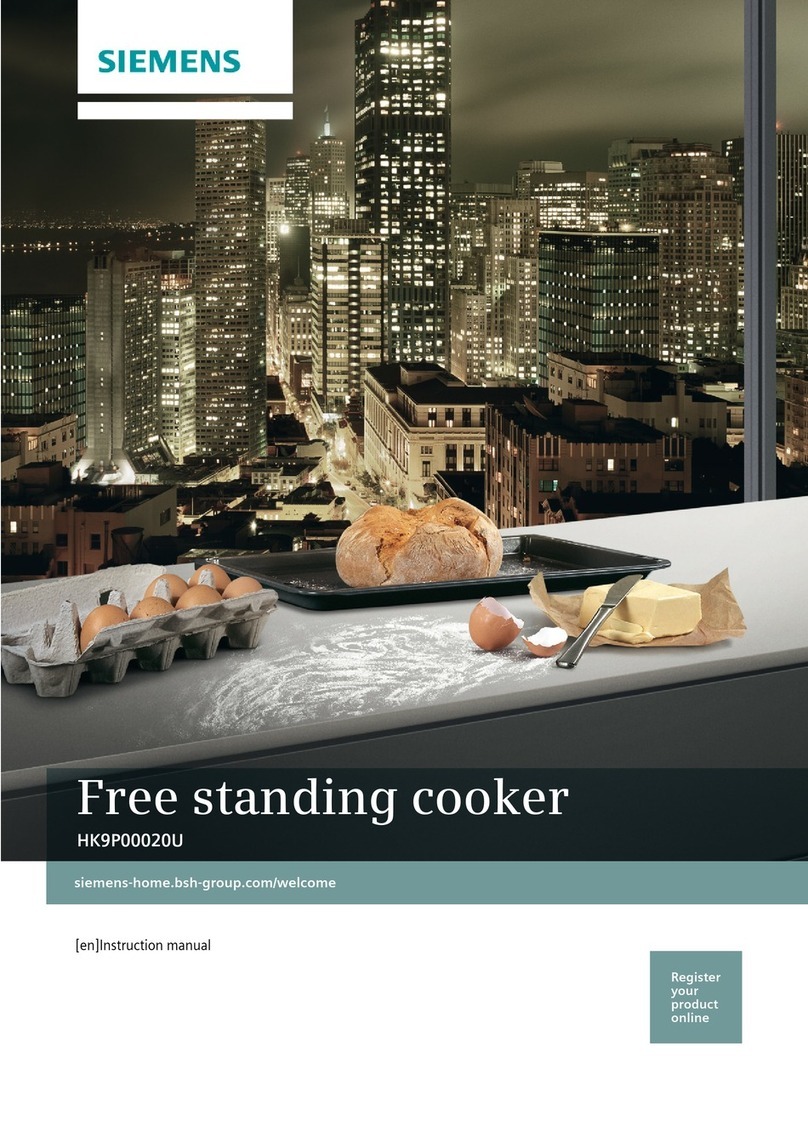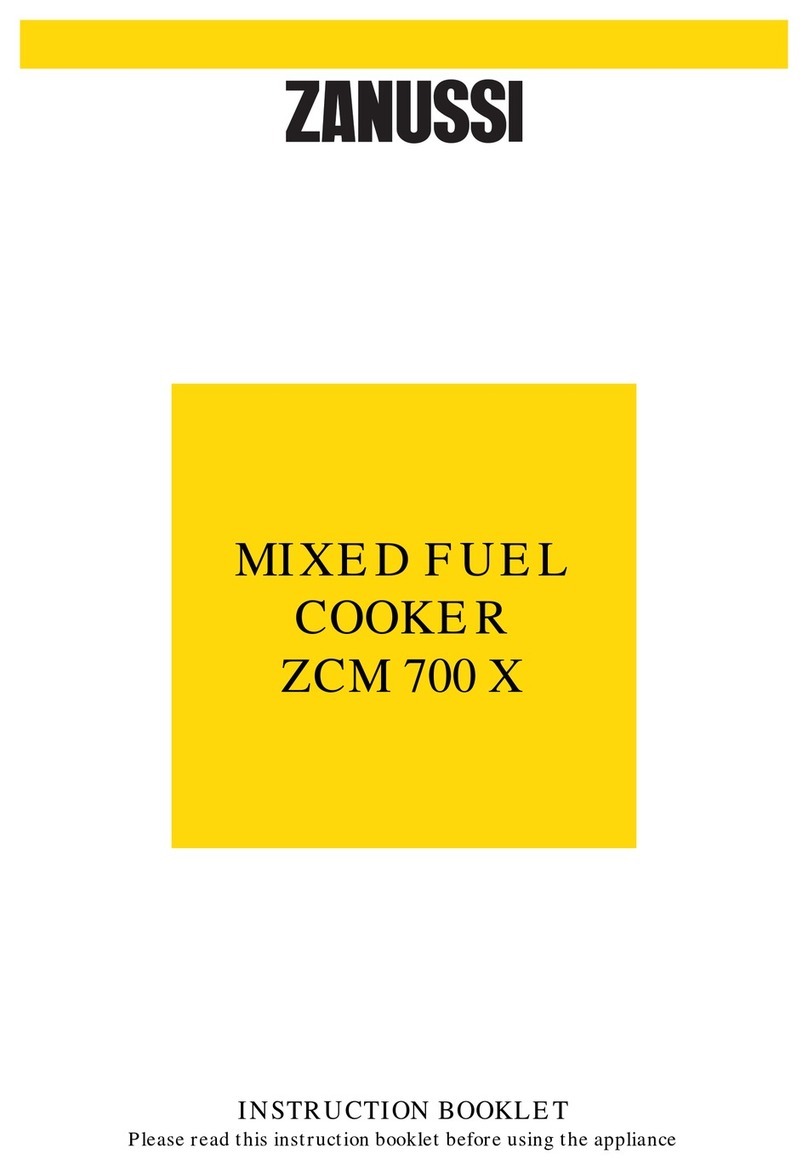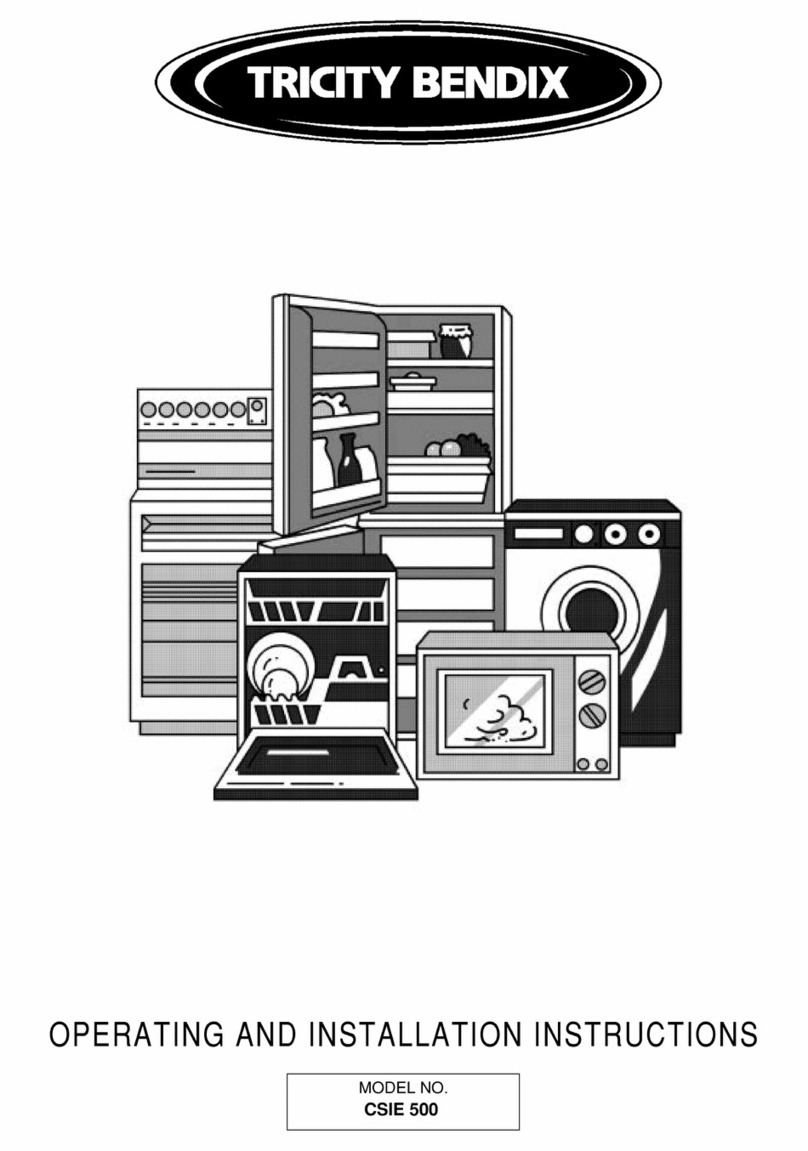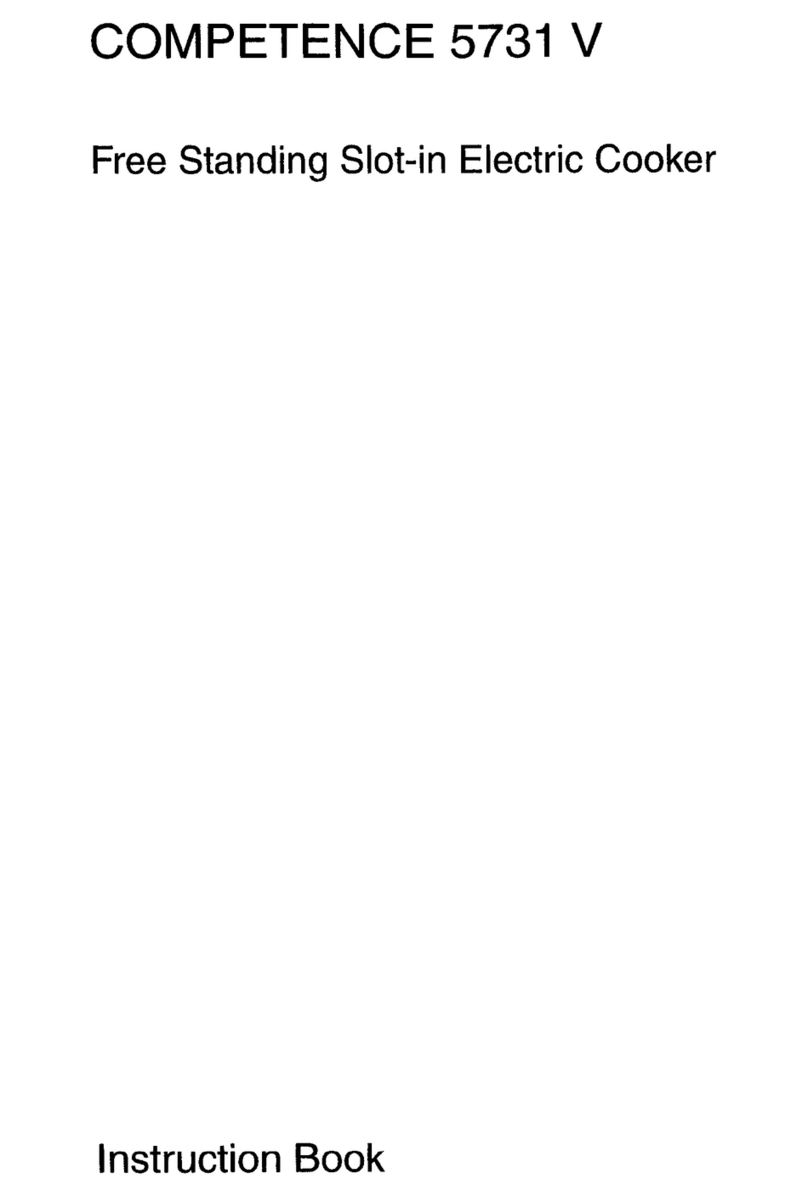10
3 - Gas connection
Gas installation
IMPORTANT NOTE
This appliance is supplied for use on
NATURAL GAS only and cannot be used
on any other gas without modification.
This appliance is manufactured for
conversion to LPG if required and is
supplied with a conversion kit.
The cooker must be installed by a
qualified person in accordance with the
Gas Safety (Installation and Use)
(Amendment) Regulation 1990 and the
relevant building/l.E.E. Regulations.
The following British Standards should
be used as reference when installing this
appliance.
BS6172 1990, BS5440 part 2 1989 and
BS6891 1988.
Failure to install the appliance correctly
could invalidate any manufacturers
warranty and lead to prosecution under
the above quoted regulation.
In the UK C.O.R.G.I registered installers
are authorised to undertake the
installation and service work in
compliance with the above regulations.
Gas connection
The installation of the cooker to Natural
Gas or LP Gas must be carried out by
a qualified gas engineer. Installers shall
take due account of the provisions of the
relevant British Standards Code of
Practice, the Gas Safety Regulations
and the Building Standards (Scotland)
(Consolidation) Regulations issued by
the Scottish Development Department.
INSTALLATION TO NATURAL GAS
Installation to Natural Gas must conform
to the Code of Practice, etc. The supply
pressure for Natural Gas is 20 mbar.
INSTALLATION TO LP GAS
This appliance must only be connected
to LPG after an LPG conversion kit has
been fitted, (see pages from 12 to 13).
When operating on Butane gas a supply
pressure of 28-30 mbar is required.
When using Propane gas a supply
pressure of 37 mbar is required.
The installation must conform to the
relevant British Standards.
Warning: Only a qualified gas engineer,
also with technical knowledge of
electricity should install the cooker. He
should observe the Regulations and
Codes of Practice governing such
installation of gas cookers.
Note: It is recommended that the gas
connection to the cooker is installed with
a flexible connecting tube made to BS
5386.
